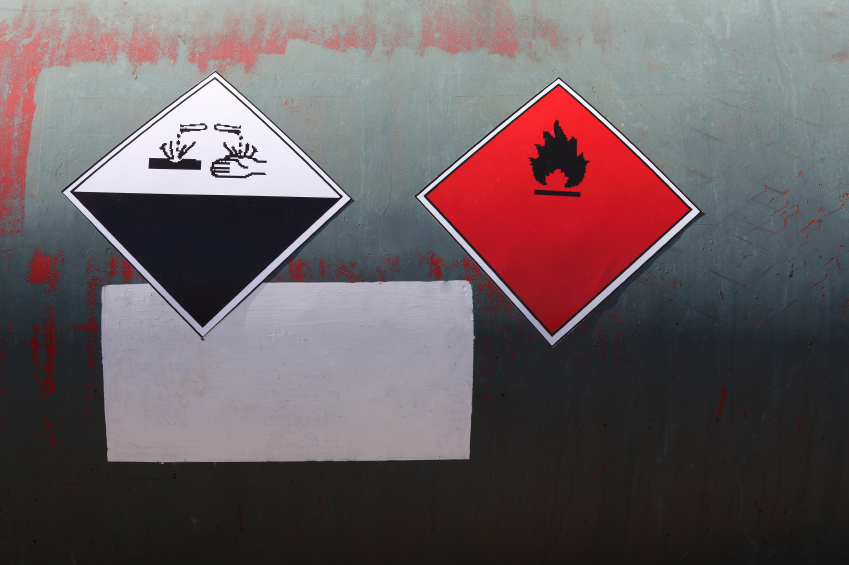
|
Quick Review
Placards, like labels, are used to graphically communicate a cargo’s hazard. Generally, labels are applied to packages and drums, while placards are placed on the outside of trucks, railcars, or freight containers.
According to the most recent information provided by DOT’s Federal Motor Carrier Safety Administration (FMCSA) Motor Carrier Management Information System, four of the top 10 hazardous materials transportation violations have to do with placarding requirements. In some cases, the placards were not there at all, and in some cases, the placards were damaged or obscured.
Forget expensive calls to lawyers and consultants. With Enviro.BLR.com, you get instant access, 24/7. Try it out today and get the 2015 EHS Salary Guide, absolutely free. Download Now.
Placarding Requirements
DOT’s placarding requirements are at 49 CFR 172.500 to 172.560. Generally, each bulk packaging, freight container, unit load device, transport vehicle, or railcar containing any quantity of a hazardous material must be placarded on each side and on each end with the type of placard applicable for the material being transported.
Placards may be made of plastic, metal, or any other durable materials capable of withstanding a 30-day exposure to open weather without significant deterioration or substantial reduction in effectiveness. Reflective or retroreflective material may be used on placards as long as the prescribed colors, strength, and durability are maintained. Each placard must measure at least 9.84 inches (in.) on each side and must have a solid line inner border approximately 0.5 in. from each edge. All hazard classes, division numbers, or text indicating a hazard must be displayed in numbers or letters at least 1.6 in. high.
Note that the solid line border measurement of 0.5 in. (12.7 millimeters (mm)) has been revised to 12.5 mm under DOT’s January 15, 2015, Hazardous Materials: Harmonization with International Standards (RRR) final rule. However, the good news is that the DOT has provided a transitional period, and that a placard in conformance with the requirements on December 31, 2014, can be used until December 31, 2016. Further, for domestic transportation, a placard manufactured before January 1, 2017, (and in conformance with the requirements on December 31, 2014) may continue in domestic service until the end of its useful life (e.g., the color tolerances must be maintained).
Enviro.BLR.com puts everything you need at your fingertips, including practical RCRA, CAA, CWA, hazardous waste regulatory analysis and activity, news, and compliance tools. Try it at no cost or risk and get a FREE report.
General Placarding Tips
These tips were gleaned from the current placarding regulations and DOT guidance documents.
- Placarded loads must be registered with the DOT.
- Placards may be displayed for a hazardous material even when not required, but the placarding must still conform to regulations, i.e., it must reflect the hazardous material being transported and must be the appropriate color and size.
- For other than Class 7 (radioactive materials) or the “DANGEROUS” placard, text indicating a hazard (e.g., “FLAMMABLE”) is not required. Text may be omitted from the “OXYGEN” placard only if the specific identification number is displayed on the placard.
- For a placard corresponding to the primary or subsidiary hazard class of a material, the hazard class or division number must be displayed in the lower corner of the placard.
- Nonbulk packages of certain hazardous materials classes transported by highway do not require placarding if the aggregate gross weight of all hazardous materials is less than 1,001 pounds. These hazard classes are listed in Table 2 at 49 CFR 172.504.
- An “ORGANIC PEROXIDE” placard became mandatory January 1, 2011, for transportation by rail, vessel, or aircraft and became mandatory January 1, 2014, for transportation by highway. The placard is meant to enable transport workers to readily distinguish peroxides from oxidizers.
